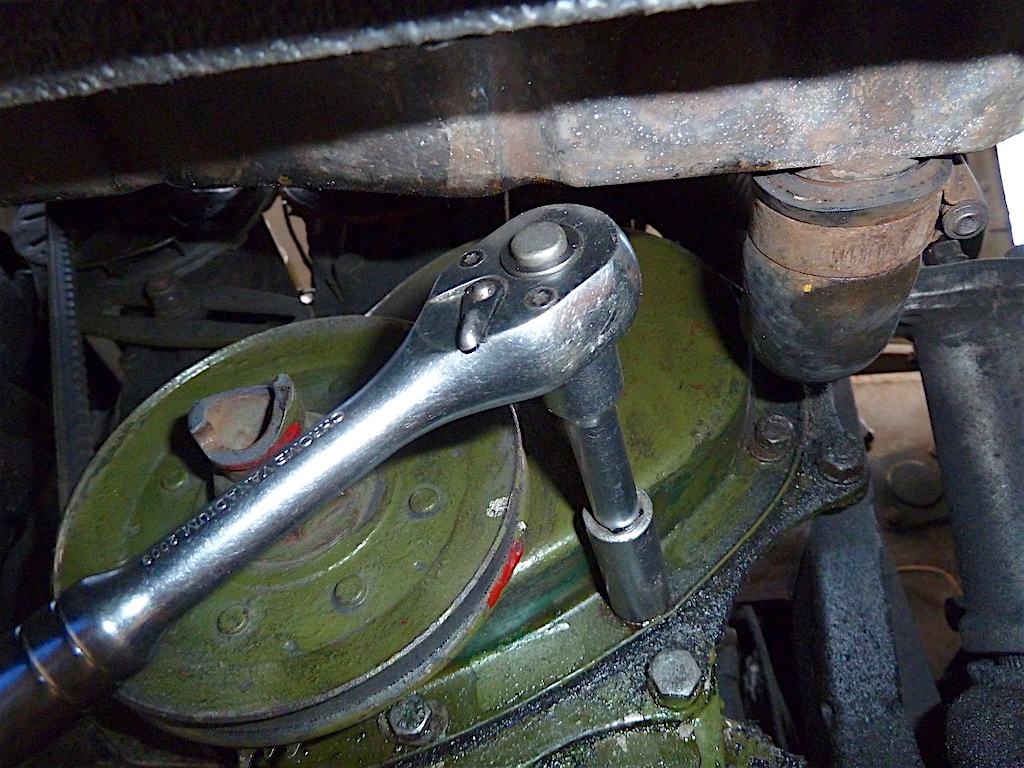Loose Fasteners are Bad News…
Advises Kim Henson.
It may seem obvious, but whenever a vehicle – old or new – is being worked on, fasteners have to be released/removed in order to take off ailing components so that they can be repaired or renewed. Equally these fasteners have then to be refitted/retightened when re-assembly takes place.
The thing is… It is always wise to re-check the tightness of fasteners after the vehicle has been back in service for a while. In some cases the workshop manual specifies re-torqueing nuts and bolts to specified figures, after a specific mileage or time period. A case in point is cylinder head securing nuts/studs.
However, in many other cases there is no such instruction, nor a specified torque figure to which to work. Indeed, also, it may be impossible to get a torque wrench anywhere near the fastener concerned.
Even so, in my experience it pays to put a spanner or screwdriver on each fastener concerned, after (say) 500 miles or a month have gone by (whichever comes first), just to make sure that they really are sufficiently tight.
The very fact that the fasteners are part of a moving vehicle which is subjected to often-rough road surfaces, vibrations and mechanical shaking at times, means that despite the best anti-lock/shakeproof washers (etc.), occasionally they can work loose. Equally, sometimes they may not have been sufficiently tightened by the operator, in the first place…
This can be dangerous when it comes to safety-related components, and especially wheel nuts/bolts, of course.
There are less important difficulties, but in every case it is better to check and find the fastener tight, than to ignore it and have it work loose.
Now I write for various motoring magazines, and in most of my technical articles I mention the need for check-tightening nuts, bolts, screws, etc.
However, everyone can make mistakes and I am red-faced when I think back to a few occasions when I didn’t check or re-check such aspects…
Just one example… My Austin A60 Cambridge started to drip engine oil, but it was difficult to see exactly where this was coming from, as the underside of the engine and the sump were covered in oil.
I carefully check-tightened the valve cover securing bolts, also those holding the tappet chamber covers, and the sump, as well as the oil filter housing’s main through-bolt, and the sump plug (I even renewed its seal, to no advantage). Still it dripped, and after a 620 mile drive to north Wales and back last weekend, annoyingly the small puddles of engine oil beneath the car seemed to be getting larger.
It then dawned on me… About a year ago I renewed the timing chain, which had necessitated taking off the cover and the gasket (the cover’s crankshaft nose oil seal was renewed at the same time). However, I couldn’t recall fully re-tightening the bolts securing the timing cover, after being interrupted by a telphone call when I had almost completed the job. To my shame, also I hadn’t checked the bolts, ever since. So, yesterday, out came my spanners to re-check the situation and sure enough, the bolts were found to be little more than finger-tight. Five minutes later they were all tight and there were no more leaks. Why didn’t I think of this before?
KIM’S TIPS TO HELP AVOID PROBLEMS:
- Always tighten nuts, bolts and screws to the manufacturers’ recommended torque settings, where available.
- Always re-check fastener security after about 500 miles or one month’s running (whichever comes first).
- If you are unsure where leaking engine oil (for example) is coming from, with the engine stopped wipe off all surplus oil using a soft cloth, then start the engine and carefully observe the underside of the unit (keeping yourself and all tools clear of all moving components, of course). When the oil pressure builds up, you may see tell-tale signs of oil weeping from the motor.
- If, when re-assembling vehicle components, you are distracted (perhaps by a telephone call, or visitors arriving, etc.) make a mental or written note to check the tightness of all fasteners. A useful tip given to me by a long-serving mechanic was this: On older cars with ‘hub caps’ or ‘nave plates’ on the wheels, never re-fit these until the wheel nuts/bolts have been fully tightened. In other words, a wheel without a hub cap/nave plate fitted is a warning sign that the securing nuts/bolts have NOT yet been tightened.
- If threads are damaged/weak, renew the component affected, or, if appropriate/possible, have thread inserts installed.
